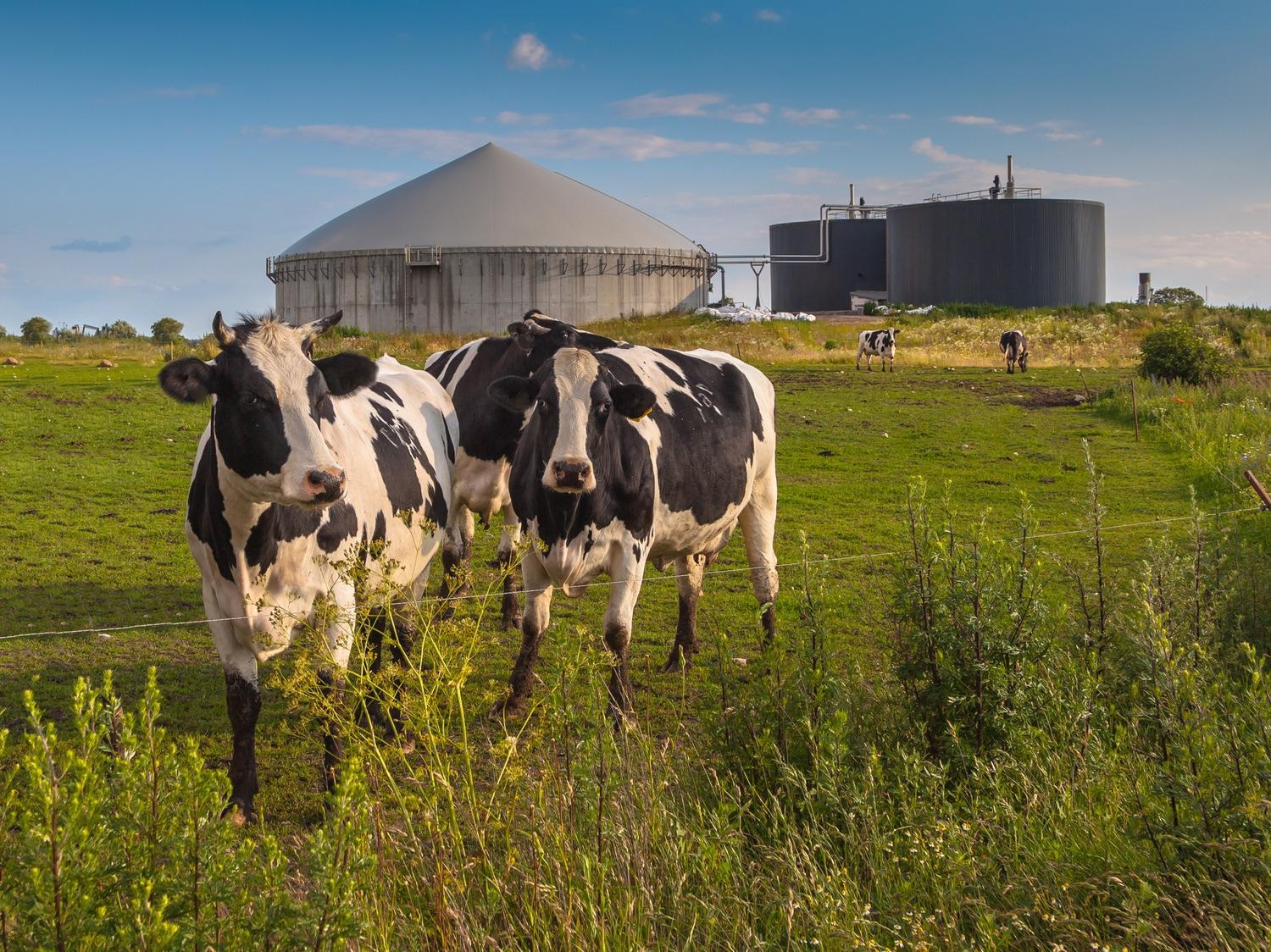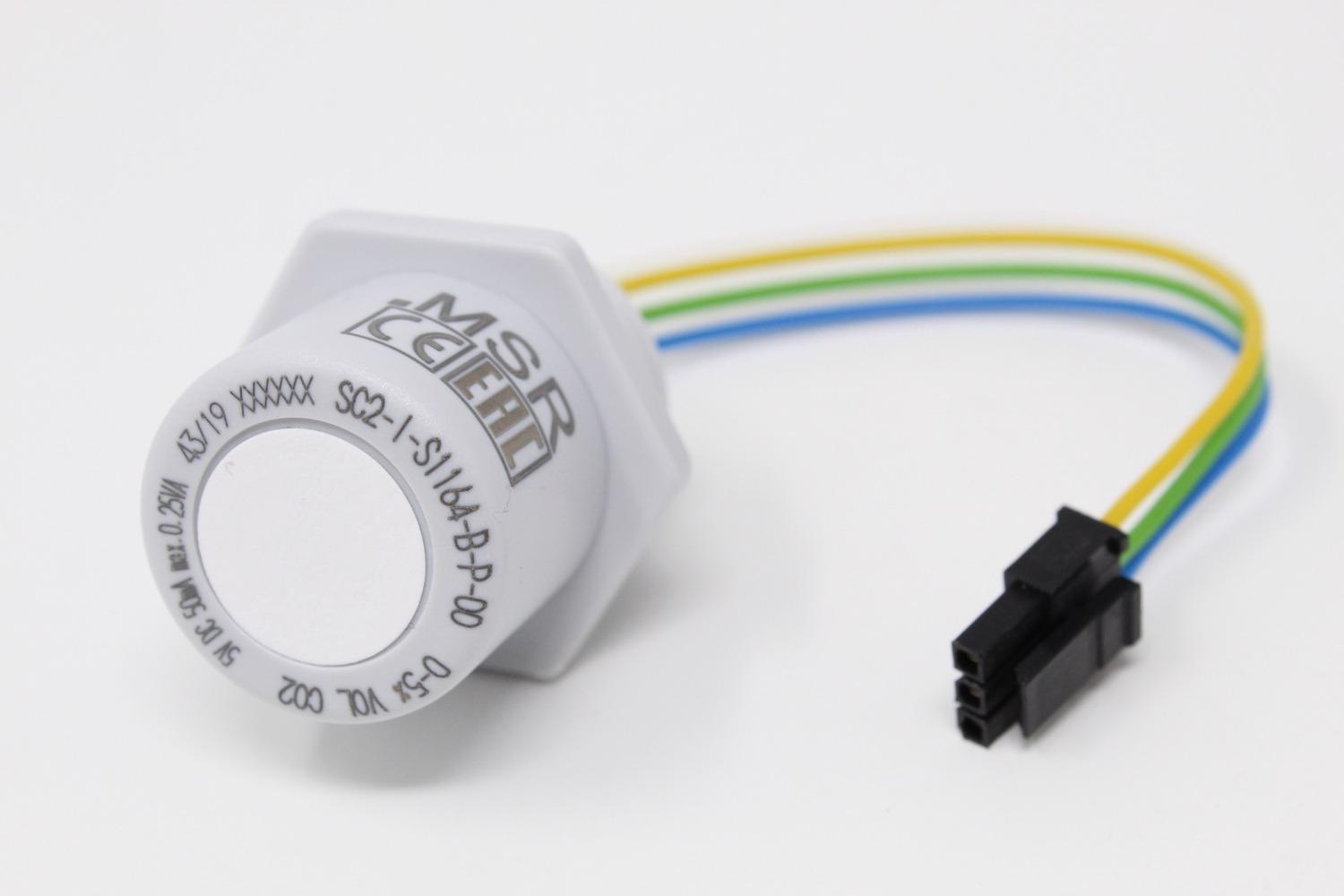Who thinks of fine dust when seeing peacefully grazing cows?
In agriculture with a multitude of sources for emissions the greenhouse gas methane has the greatest impact on climate change. But how can the climate killers of agriculture be controlled and kept down? The coalition agreement of the new German government has been signed and includes new decisions on the regulation of NH3, CH4 and CO2 in agriculture.

Image credit: ©Copyright adobe.stock.com, Biogas Plant and Cows
MSR-Electronic from Lower Bavaria is a specialist for gas warning systems and has years of experience in monitoring gases such as ammonia, methane or carbon dioxide.
Methane emissions
As ruminants, cattle produce methane during the digestive process. The greenhouse gas is produced when bacteria in the animals' rumen decompose grass and other feedstuff. The cattle finally belch the methane, thus releasing it into the environment. Methane is so damaging to the climate because it has many times the greenhouse potential of CO2.
Ammonia emissions
According to the German Environment Agency, agriculture is the main source of ammonia emissions, accounting for 95 %. The pollutant ammonia is mainly produced in animal husbandry because the excrements of farm animals contain urea and protein, which are converted into ammonia. Thus, when building new stables, emission guidelines must already be followed, just as they must in industry.
Carbon dioxide emissions
Even if CO2 is not the emission driver in agriculture, these emissions still are worth to be mentioned. It goes without saying that, for example, tractors with diesel engines or the heating of stables with diesel/heating oil are also harmful to the climate.
MSR-Electronic’s solution for gas and emission monitoring
All these pollutants in barns can be monitored with appropriate gas sensors (e.g. type SC2) and thus the ventilation can be controlled in an energy-saving way. In addition, long-term monitoring can provide clarity about the real values, which is an important step for a general reduction in emissions.

Image credit: ©Copyright MSR-Electronic GmbH, Germany, SC2 Gas Sensors
The Sensor SC2 includes a sensor element and an amplifier as well as a µController for measured values processing. All important data and measured values of the sensor element are stored fail-safe in the µController and transmitted digitally via the local bus to the Sensor Board (e.g. SB2 or MSB2). The calibration management is also integrated in the µController of the Sensor.
Thanks to the X-Change technology, calibration can be carried out by simply exchanging the sensor or by using the integrated, convenient calibration routine directly on the system.
MSR-Electronic’s solution for biogas plants
According to the German Environmental Agency, the share of agriculture in CH4 emissions is about 50 %. There is an enormous potential for savings if this methane is converted into electricity in biogas plants, as is already the case in many places. To produce methane, the manure is fermented and the methane released is then converted into electricity. This process must be monitored with the help of gas sensors. MSR-Electronic gas detection products are installed in many biogas plants, thus safeguarding the process and ensuring integrity.
Further information on MSR products can be found here in the current MSR-Electronic online catalog or in the webshop: www.msr-24.com.
MSR-Electronic is a manufacturer of fixed gas warning systems with decades of experience in the field of building automation and gas measurement technology. The international company with headquarters in Germany has a wide range of methods for the detection of toxic and combustible gases. On this basis MSR-Electronic develops individual gas sensors, controllers and warning devices for many applications, such as parking garages, tunnels, petrochemical industry or shipping. The products meet more than the general standards and regulations and can therefore guarantee the safety of the plant. https://www.msr-electronic.de/en/